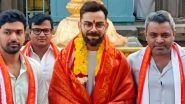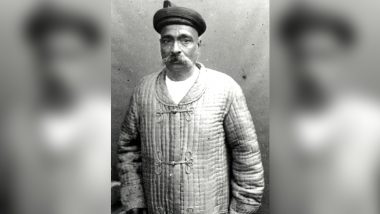Ganesh festival or popularly known as Ganeshotsav will start from September 13 this year and like every time, the enthusiasm among the devotees is at its peak. From crowded markets to artisans giving their final touch to Ganpati idols and the pandals, people are eagerly waiting to welcome Ganpati Bappa.
It is said that on this day, Lord Shiva gave an elephant head to his son Ganesha and declared Lord Ganesha as superior to all the gods and other gods blessed him with many boons. This 10-day festival is celebrated with great fanfare mainly in Maharashtra. It starts with the installation of Ganesh idols at homes and at mandaps The auspicious day marks the birth of Hindu God Ganesha and starts with the 'sthapana' of the Lord in the house, ending with 'visarjan' on the tenth day. Ganpati 2018 Date: Significance, History, Importance, Rituals & Why is the Festival of Lord Ganesha Celebrated for 10 Days.
How Bal Gangadhar Started the Tradition?
Ganesh Chaturthi is also known as Vinayak Chaturthi and is one of the most popular festivals. There are different historical versions of how people started celebrating the festival. According to some, Shivaji first started celebrating the festival since Lord Ganesha was the Kuladevata of the Peshwas. Centuries later, Ganesh Utsav was reinvented by Bal Gangadhar Tilak.
According to a report on the Statesman, in 1892, when a Pune resident visited Gwalior, a state ruled by the Marathas, he witnessed Ganesh Chaturthi celebrations. Inspired by this, he installed the first public Ganesha idol. When it came to the notice of Tilak, he praised their efforts in his newspaper Kesari. He was also the first one to install large statues at public places.
Tilak started encouraging people to come out in the streets and celebrate the fervour of the festival in Pune. A feeling of patriotism was instilled as people opposed the Britishers who didn't allow mass gatherings at that point in time. It was for the first time, people in Mumbai and Pune saw the Britishers watch helplessly as they took part in the elaborate cultural events. There was a strong political undercurrent, which was difficult to miss.
It was the time when people came in large numbers and prayed to the Almighty to give them freedom from the British rule. Most of the time, the singing, dancing and drama that was part of the gala were centred on nationalism and independence. In 1893, Tilak took the celebration to Bombay. The Keshavi Naik Chawl Sarvajanik Ganeshotsav Mandal, in Girgaum, is where the oldest and first pandal was set up.
(The above story first appeared on LatestLY on Sep 12, 2018 05:00 PM IST. For more news and updates on politics, world, sports, entertainment and lifestyle, log on to our website latestly.com).













 Quickly
Quickly











